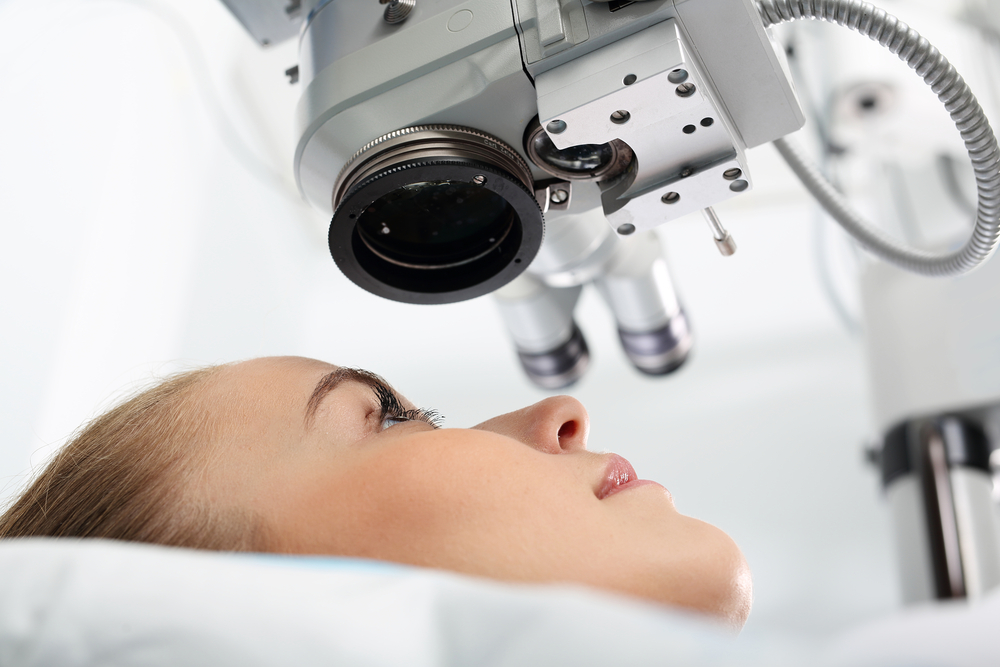
Do you wish you could see clearly without contact lenses or glasses? If so, PRK or LASIK may be an excellent choice for you.
PRK and LASIK are laser eye surgeries that are equally effective in treating farsightedness, nearsightedness, and astigmatism. After LASIK or PRK, you’ll be able to significantly reduce your dependence on visual aids.
Keep reading to learn more about PRK and LASIK and the difference between both procedures!
What is LASIK?
LASIK is a type of laser eye surgery that can correct your refractive error. A refractive error occurs when the shape of your eye causes the light to not focus properly on the retina.
LASIK corrects your refractive error by changing the shape of your cornea, which alters how light lands on your retina. Correcting your refractive error allows you to see more clearly, reducing or eliminating the need for visual aids.
What is PRK?
PRK is another type of laser eye surgery. Like LASIK, PRK works by reshaping your cornea.
Changing the shape of your cornea enables it to bend light correctly, improving your vision. However, the method of altering the cornea in each procedure is what sets them apart.
What Happens During LASIK?
Prior to your procedure, numbing eye drops will be applied to ensure you are comfortable. Using a femtosecond laser, your LASIK surgeon will create a hinged flap from the outermost layer of the cornea or epithelium.
The flap will then be folded back to reveal the underlying corneal tissue or stroma. Next, your LASIK surgeon will contour the inner layers of the cornea with an excimer laser to correct your vision.
After reshaping your cornea, your LASIK surgeon will carefully position the flap back into place. Usually, the flap doesn’t require stitches as it will heal naturally on its own during your recovery.
The procedure takes approximately fifteen minutes to complete.
What Happens During PRK?
Like LASIK, before PRK, your eye surgeon will begin by administering numbing drops so you don’t feel pain during the procedure. However, instead of making a flap, during PRK your eye surgeon will use an alcohol solution or tiny blade to completely remove the epithelium.
Removing the epithelium allows your surgeon to reshape the inner corneal layers with an excimer laser and improve your vision. Once done, your eye surgeon will put a contact lens bandage over your cornea to protect your eye as the epithelium regenerates.
Similar to LASIK, the entire procedure takes about ten to fifteen minutes to complete.
LASIK vs PRK Recovery
The flap created in LASIK allows for a faster recovery. You can resume most of your everyday routine in as little as one to two days.
Recovery from PRK takes more time. That’s because the epithelium is removed entirely and has to regenerate before you resume normal activities.
However, those who are active or in sports may have to avoid these activities for longer with LASIK since the flap can be easily dislodged until complete healing.
How Do I Know if LASIK or PRK is Right For Me?
Determining if LASIK or PRK vision correction surgery is right for you requires examining your eyesight goals and needs, your eye health, and your lifestyle. Schedule an appointment at Morganton Eye for a full exam to see if you meet the requirements.
Your eye doctor will help you determine which procedure may be best for you. It’s also important to consider your daily activities, sports, and hobbies.
Do you want to determine if you might be a good candidate for refractive surgery? Schedule an appointment at Morganton Eye in Shelby, NC, today!
